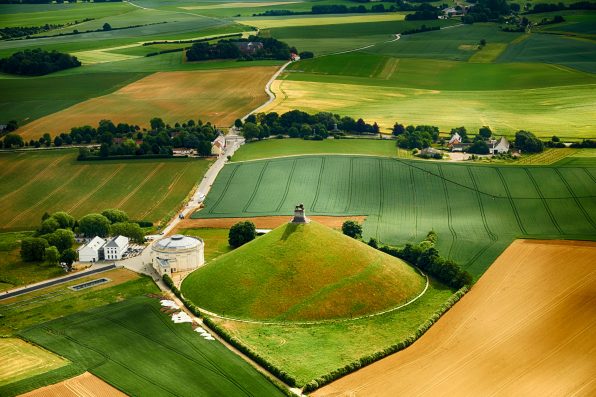Archaeologists Are Still Uncovering Evidence From Waterloo, Like This Pit Filled With Amputated Limbs

Two centuries ago, the Battle of Waterloo took place, marking the end of the Napoleonic Wars. The 1815 battle was the biggest and bloodiest one of the Napoleonic Wars.
Today, archaeologists are still uncovering evidence from the brutal fight at Waterloo. Recently, they excavated a “gore pit” filled with euthanized horses and human limbs.
The University of Glasgow and Waterloo Uncovered, a charity that allows veterans to help conduct archaeological digs at battle sites, collaborated to carry out the most recent excavation.
In 2022, the organization discovered the second human skeleton at the site near Mont-Saint-Jean farm. They returned to the site this year and found even more evidence.
During a survey of an area that was believed to have held a field hospital, the organization came across a trench that seemed to be meant for clearing the hospital of gore after the battle as quickly as possible.
It contained human and animal remains, which were separated by a line of ammunition boxes that were stripped from the leather satchels of soldiers.
Archaeologists dug up the remains of an ox and at least seven horses in the northern part of the trench.
Some of the horses showed signs of being butchered. Three of them were euthanized with a musket ball to the head.
In the southern part of the trench, where the human skeleton had been located, archaeologists also found amputated human limbs. Many of the limbs still contained “evidence of removal by the surgeon’s saw.”

olivier – stock.adobe.com – illustrative purposes only
“I can’t think of any other site that has this combination of elements—it’s truly unique, within Napoleonic archaeology and beyond,” said archaeological director Professor Tony Pollard from the University of Glasgow.
“The layout of the trench, with all animal remains on one side of the ammunition box barrier and all the human remains on the other, strongly suggests that the men who buried this individual [found in 2022] attempted to offer him a level of dignity and respect despite the horrific scene they would have found themselves facing while clearing the field hospital of the dead.”
The Battle of Waterloo was fought on June 18, 1815, between French troops led by Napoleon Bonaparte and an army led by the Duke of Wellington of England and Field Marshal Gebhard Leberecht von Blücher of Prussia.
Finally, Wellington and Blücher won the battle, ending the Napoleonic Wars. A total of about 50,000 men out of 200,000 were killed on both sides that day.
The war put a stop to Napoleon’s conquest of Europe. Napoleon was ultimately exiled to the island of Saint Helena.
Even 200 years later, the lives of veterans of other conflicts are being changed for the better because of the battle.
They are being given the opportunity to join archaeological digs, which can help support their physical and mental well-being.
“It may seem counterintuitive to put injured veterans back on a battlefield, but it’s actually extremely beneficial,” stated Abigail Boyle, the CEO of Waterloo Uncovered.
“Many elements of their time engaging in practical archaeology feel familiar to those who have served—routine, camaraderie with fellow service people, physical outdoor work—but here, they’re mixing with a wide range of people, including civilians, and learning a variety of transferable skills that will aid them in their transition.”
Sign up for Chip Chick’s newsletter and get stories like this delivered to your inbox.
More About:News





